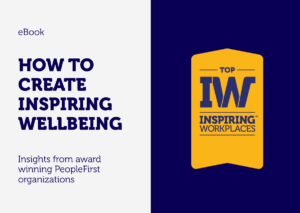
12th October 2023
Navigating Workplace Culture Change with the Insights of Neuroscience

This article explores the use of neuroscience to navigate culture change in the workplace. It highlights that while the modern workplace has evolved rapidly, our brains have not fully adapted to these changes, which can hinder organizational change efforts. The article discusses how understanding brain function can help organizations implement successful cultural transformations, addressing topics such as the brain’s resistance to change, the importance of social connection, managing emotions, decision-making and bias, effective communication, and changing behaviors. It emphasizes that aligning organizational practices with neuroscience principles can lead to a thriving culture and lasting change.
From the original article written by Ana McFee – based on Hilary Scarlett’s book – and published in Hospitality Net:
The workplace has undergone remarkable transformations in the 21st century, characterized by the rapid integration of technology, the rise of remote and flexible work arrangements, and a shift towards collaborative and innovative work cultures. However, our brains have not fully adapted to these modern dynamics, often struggling to cope with the constant influx of digital information, the demand for multitasking, and the need to navigate complex virtual and physical workspaces.
As a result, organizations typically struggle to implement successful organizational change. However, by understanding how our brains function and respond to change, we can work with our physiology instead of against it. This is where neuroscience comes into play. Neuroscience provides a scientific lens through which we can better understand ourselves and others, offering practical insights that can make a real difference in transforming business culture.
Hilary Scarlett’s groundbreaking book, “Neuroscience for Organizational Change: A Practical Guide to Managing Change,” presents a compelling blend of intellectual rigor and practicality. It offers invaluable insights into how to effectively navigate and implement changes. In this article, we will delve into these insights, aiming to shed light on the powerful ways neuroscience can be used to steer culture change in the workplace.
How does our Brain Work?
Over the course of human evolution, our brains have grown in size, enabling us to search for food over larger areas and form stronger social relationships. With around 86 billion neurons and countless connections between them, our brains are capable of complex information processing and communication. However, it is the strength and number of these connections, known as synapses, that truly determine our brain’s optimal functioning.
Our brains are wired for survival, constantly seeking to avoid threats and pursue rewards. While both responses are important, the threat response is much stronger. Our brains are wired to predict potential dangers and keep us out of harm’s way. However, this drive for survival also leads our brains to conserve energy by taking shortcuts, which can sometimes hinder our performance.
The good news is that our brains possess neuroplasticity, the ability to restructure, change, and learn throughout our lives. Despite the challenges presented by the modern workplace, we can still adapt and learn if we choose to do so.
Our Brain’s Resistance to Change
Organizations depend on their people to continuously adapt, collaborate, innovate, and perform at their best. However, implementing significant change within an organization can leave it vulnerable, and its employees paralyzed by uncertainty.
This threat response redirects blood flow away from the prefrontal cortex, which is responsible for critical thinking, decision-making, and emotional control. Instead, blood flows to the parts of the brain associated with the fight-or-flight response. As a result, our thinking becomes impaired, emotional control diminishes, and we perceive the workplace as more hostile than it actually is. This compromised state hinders our performance and makes navigating change even more challenging.
Experiences of change greatly influence how we perceive current changes. Our expectations color our perception of the world, shaping our responses to new situations.
“One of the benefits of learning about what helps the brain to perform at its best is that each person can go away and immediately put some of the learning into action. Leaders do not have to wait for the whole organization to move or for culture change. Small actions from each individual can make a big difference. Nevertheless, neuroscience raises questions not just about how each of us works with others, but also about the very way in which 21st-century organizations are set up and operate. From what we know, our brains flourish when: the reward network is activated; when we feel challenged but not overwhelmed; when we have a perception of some control over our work; when we are not bored; when we feel we belong; and when we are not always required to be ‘on’. There is much for us to learn about our brains and the implications for how we work and thrive. These are exciting times. We have not designed organizations to get the best out of our brains – not yet, but we are learning.”
Hilary Scarlett, writer, international speaker and consultant on change management and neuroscience
Driving Organizational Change with Neuroscience
Organizations depend on their people to continuously adapt, collaborate, innovate, and perform at their best. However, implementing significant change within an organization can leave it vulnerable and its employees uncertain.
To ensure successful change, leaders must understand how to harness the power of the threat and reward responses in their employees’ brains. The inverted U of performance demonstrates that some stress is necessary for optimal performance, but too much pressure can impede the prefrontal cortex’s functioning. Dopamine, an important neurotransmitter, plays a role in learning, positivity, and focus. Cultivating a growth mindset, which believes in the brain’s ability to restructure and learn, enhances individuals’ and managers’ capacity for taking on challenging tasks and coaching others.
To maximize performance during periods of change, leaders should establish realistic short-term objectives, reinforce individuals’ previous accomplishments, offer praise and acknowledgment, foster small acts of kindness, introduce novelty in a manageable manner, and infuse the workplace with fun and humor. They should prioritize open and transparent communication, facilitate mindset workshops, and promote activities that encourage a calm and focused mind.
The Importance of Social Connection
Human beings have an inherent need to feel a sense of belonging and connection to others. This need intensifies during times of uncertainty, making social connection crucial in navigating change. Our brains process social pain using the same system as physical pain, highlighting the significance of social rejection and exclusion.
Research demonstrates that successful teams are composed of individuals who actively listen, take turns in speaking, and consider different perspectives. Feeling like part of a team, with shared targets and a sense of belonging, fosters motivation. Leaders and managers play a critical role in understanding the brain’s fundamental need for social connection, thereby bringing out the best in their teams.
To enhance social connections and foster a strong sense of belonging, managers should employ strategies that help individuals recognize the impact of their work on others. Facilitate personal interactions with beneficiaries and promote teamwork using inclusive language. Offer regular recognition and appreciation for individual contributions to trigger the brain’s reward system and solidify a sense of belonging. Address challenges from team restructuring and departures by providing support and facilitating the formation of new bonds. Nurture a culture of collaboration and shared goals for a more engaged and connected group dynamic.
Managing Emotions During Change
Emotions play a crucial role in decision-making and performance. Fear, anger, and anxiety can hinder performance, while stressors in the workplace can have both short-term and long-term negative effects on people’s mental and physical well-being.
Effectively managing emotions is essential for achieving peak performance. By implementing strategies to alleviate fear, anger, and anxiety, creating a stress-free environment, practicing emotional control, and utilizing mindfulness techniques, individuals can optimize their emotional well-being. It is important to label negative emotions and cultivate a sense of control, while also helping individuals understand and manage their emotions. Encouraging open discussions without excessive rumination and equipping managers with the necessary skills to support employees are crucial steps. Additionally, providing workshops on resilience, emotional management, and reappraisal techniques can further enhance individuals’ ability to navigate change with emotional intelligence.
Decision-Making and Bias
Change often requires swift decision-making, which can be challenging amid uncertainty. Decision-making consumes mental energy and can be influenced by emotions. Understanding biases and the decision-making process is crucial for effective leadership during change.
To ensure effective decision-making while mitigating biases, consider the influence of glucose levels on cognitive function. Emotions play a significant role in decision-making, and biases shape our perception of the world. The impact of social conformity should be examined, and it’s important to recognize that our brains are not entirely logical. Mindfulness helps protect against biases, and cultivating critical thinking is pivotal. Integrate practical strategies to mitigate biases, utilize techniques like priming, and promote self-reflection for greater awareness in decision-making.
Download our ebooks on:
Inspiring Workplaces eBook: How to Create Inspiring Wellbeing (inspiring-workplaces.com)
eBook: The 4-day week: A game changer or just a fad? (inspiring-workplaces.com)







